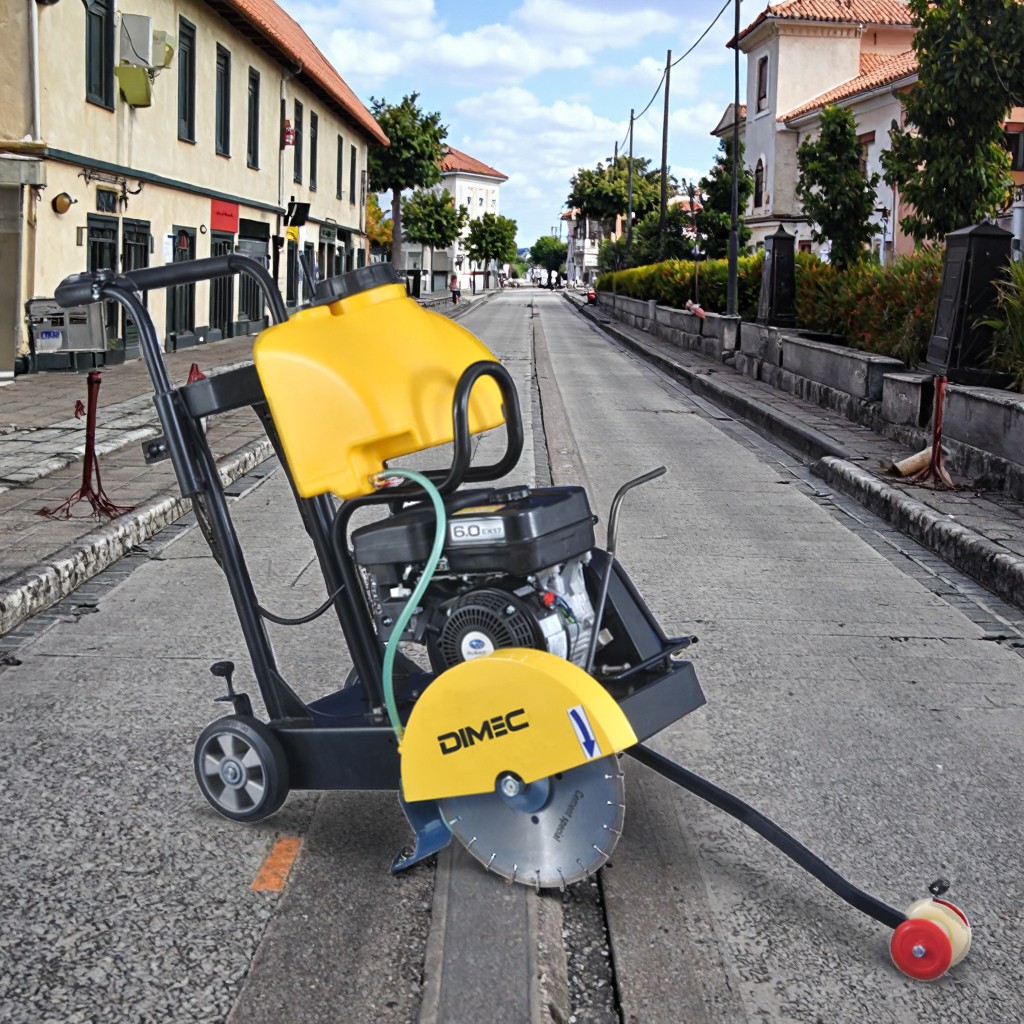Walk Behind Concrete Saw Buying Guide: 21 Power Tips for Maximum Cutting Performance
Home » Walk Behind Concrete Saw Buying Guide: 21 Power Tips for Maximum Cutting Performance

Table of Contents
Introduction to Walk Behind Concrete Saws
A walk behind concrete saw is a powerful cutting machine used in construction and road work to slice through concrete, asphalt, and other hard surfaces. It is essential for creating expansion joints, demolition, trenching, or even resurfacing operations. Unlike handheld models, these saws are pushed manually by an operator, providing better control and depth precision.
Contractors, masons, and municipalities rely on walk behind saws for their heavy-duty cutting needs, especially when high-volume or deeper cuts are required. Understanding the ins and outs of this equipment can help you choose the right tool for the job—and avoid costly mistakes.
Why Choose a Walk Behind Concrete Saw?
Walk behind concrete saws are preferred over other types for their stability, depth capability, and consistency. They allow operators to make long, straight cuts with less physical strain and higher accuracy.
Advantages:
Deeper cuts compared to handheld saws
Safer operation due to increased control
Faster cutting on large surfaces
Reduced operator fatigue
If you’re looking to improve productivity while maintaining quality and safety on-site, a walk behind concrete saw is a smart investment.
Types of Walk Behind Concrete Saws
When selecting a walk behind saw, the power source is one of the most important factors to consider.
Gas-Powered Saws
These are the most common type and ideal for outdoor use where power outlets aren’t available. They offer strong torque and are perfect for heavy-duty cutting.
Electric-Powered Saws
Suited for indoor environments or locations with strict emissions regulations. These produce less noise and no exhaust, but may be limited by power cord reach.
Diesel-Powered Saws
Great for industrial-level performance, diesel saws are more fuel-efficient than gas models and are ideal for high-hour operations on roads or highways.
Key Components of a Walk Behind Concrete Saw
Understanding the machine’s anatomy helps you evaluate its capabilities and maintenance needs.
Blade Types
Concrete saws use diamond blades for durability and clean cuts. Choose between wet blades (require water) and dry blades (used without water but produce more dust).
Engine Power
More horsepower means faster and deeper cuts. Look for models with 8–24 HP depending on your project size.
Water Tank & Cooling System
Integrated water tanks are essential for cooling the blade, preventing dust, and extending blade life.
How to Choose the Right Saw for Your Project
Choosing the best walk behind concrete saw depends heavily on your project’s scope and specific requirements. From pavement thickness to site conditions, these factors all influence your purchase decision.
Step-by-Step Decision Factors:
Project Scale: Are you making long expansion cuts or minor repairs?
Cutting Depth Needs: Deeper cuts call for larger blades and more engine power.
Power Source Availability: Will you work outdoors or indoors? Are emissions a concern?
Mobility and Maneuverability: A lighter model might be better for tight spaces.
Selecting a saw that matches your cutting workload and environment ensures efficiency and long-term satisfaction.
Cutting Depth and Blade Diameter
Your cutting depth is directly tied to your blade’s diameter. Here’s a simple guide:
| Blade Diameter | Maximum Cutting Depth |
|---|---|
| 12 inches | ~4 inches |
| 14 inches | ~5 inches |
| 18 inches | ~6.5 inches |
| 20+ inches | ~8–10 inches |
To avoid overworking the motor, always match the engine power to blade size. A deeper cut requires both a larger blade and a more powerful motor.
Tip: Always perform a test cut to check blade depth before starting full-scale cutting.
Surface Compatibility: Asphalt vs. Concrete
Not all walk behind saws perform equally on different surfaces.
Concrete cutting requires a high-torque motor and durable diamond blades.
Asphalt cutting needs softer bond blades to reduce wear.
If your work involves both materials, consider a multi-surface compatible model with interchangeable blades.
Safety Features to Look For
Safety is paramount in concrete cutting. Look for walk behind saws with:
Emergency stop switches
Blade guards to prevent contact injuries
Dust suppression systems
Anti-vibration handles for operator comfort
Low noise enclosures if used in residential areas
Pro Tip: Always wear PPE—goggles, gloves, steel-toe boots, and hearing protection—regardless of the saw model.
Noise and Vibration Control
Heavy-duty cutting generates significant noise and vibration. Prolonged exposure can lead to operator fatigue or hearing damage.
Electric models are quieter and ideal for noise-restricted environments.
Anti-vibration systems and sound-deadening materials in saw frames help reduce fatigue.
Rubberized handles and ergonomic grips offer better control during long shifts.
Consider using walk behind saws that meet OSHA noise regulations to protect your team.
Durability and Maintenance Needs
Durability depends on build quality and components. Look for these construction features:
Steel-reinforced frames
Heat-treated blade guards
Corrosion-resistant water tanks
High-torque cast iron gearboxes
Also, consider ease of maintenance. Models with accessible engine compartments, grease points, and blade change systems save time and reduce downtime.
Productivity Boosting Accessories
Enhance your cutting efficiency with the right accessories:
Adjustable depth control levers
Laser guides for precision cutting
Blade wrenches and holders
Extended water lines
Wheel kits for easier transport
Accessories aren’t just conveniences—they can save hours of labor across projects.
Walk Behind vs. Handheld Saws
| Feature | Walk Behind Saws | Handheld Saws |
|---|---|---|
| Cutting Depth | Up to 10+ inches | Up to 5 inches |
| Comfort | Ergonomic for long use | More physical effort |
| Accuracy | High | Moderate |
| Best Use | Roads, large slabs | Walls, vertical surfaces |
Choose a walk behind saw for horizontal, high-volume cutting and a handheld saw for detailed or vertical jobs.
Industry Applications of Walk Behind Saws
Walk behind concrete saws serve a wide range of industries:
Construction: Expansion joints, slab work, and trench cutting
Road Work: Cutting through asphalt or concrete for repairs and installations
Demolition: Controlled breaking of concrete floors
Utility: Creating access for plumbing and electrical lines
Municipal Projects: Sidewalks, driveways, and curb installation
Their versatility makes them essential for any concrete or asphalt jobsite.
Environmental Considerations (Emissions, Dust)
Construction activities increasingly face emissions and dust control regulations.
Electric saws produce zero emissions, ideal for indoor or urban use.
Dust suppression via water tanks reduces airborne silica particles.
Wet cutting is often required by law in residential zones or public areas.
Visit OSHA’s silica safety guidelines for more on dust control protocols.
Cost vs. Value: What Should You Spend?
Walk behind concrete saws range from $1,000 to $10,000+, depending on:
Engine size and power
Blade compatibility
Safety and comfort features
Brand reputation
Included accessories
Spending more upfront on a durable, powerful model can reduce repair costs and extend operational lifespan.
Top Brands in the Market
Some of the top-performing and most trusted brands include:
Husqvarna
Makita
Stihl
PME (Pinnacle Mechanical Equipment)
Core Cut
EDCO
These brands offer machines tailored for different budgets and use cases, from small contractors to road construction giants.
Maintenance Tips for Long-Term Use
Check oil levels before every use
Inspect blade wear and replace as needed
Flush water lines after every wet cut
Tighten bolts and belts weekly
Store in a dry location
Routine maintenance prolongs your machine’s life and keeps it cutting with precision.
Common Mistakes to Avoid When Buying
Buying a too-small saw for a large project
Ignoring blade compatibility with materials
Overlooking emission restrictions
Choosing based on price alone, not performance
Skipping maintenance planning
Avoiding these mistakes ensures better ROI and fewer headaches on the job site.
Real User Reviews and Case Studies
Contractors often praise walk behind saws for:
Faster job completion times
Cleaner expansion joints
Improved operator comfort
Reliable performance in tough conditions
Case Study: A paving company in Texas reported a 30% productivity boost after switching from handheld to walk behind saws for highway expansion cuts.
FAQs
1. How deep can a walk behind concrete saw cut?
Most models cut between 4 to 10 inches deep depending on the blade size and engine power.
2. Can I use the same saw for asphalt and concrete?
Yes, but you’ll need different blades tailored to each material.
3. Do I need water for all concrete saws?
Wet cutting is recommended for most jobs to reduce dust and blade heat, though dry blades exist for specific uses.
4. Are electric saws as powerful as gas ones?
Electric saws offer clean, quiet operation but may lack the torque needed for very deep or tough cuts.
5. How often should I replace the blade?
Replace when you notice slower cuts, more vibration, or visible wear on the diamond edge.
6. Is it worth renting vs. buying?
If you cut infrequently, renting might be cheaper. But for regular use, owning saves money over time.
Conclusion
A walk behind concrete saw is more than a cutting tool—it’s a precision machine that helps professionals deliver clean, efficient, and safe cuts on every project. Whether you’re working on roads, sidewalks, or industrial flooring, the right saw enhances productivity and reduces operator fatigue.
By understanding key factors like power source, blade compatibility, cutting depth, and safety features, you’re better equipped to make a smart investment.
Small Construction Equipment Specialist
About the author

Amber Lu
General Manager | Wuxi Pinnacle Mechanical Equipment Co., Ltd. (PME)
Specialist in Compact Construction Machinery & International Trade
As General Manager of PME, I bring over 15 years of expertise in compact construction machinery and global trade. I have worked extensively with medium to large companies worldwide, providing professional support and customized solutions across diverse markets.
With in-depth product knowledge of plate compactors, tamping rammers, floor saws, concrete vibrators, engines, and power equipment, I lead PME’s international expansion and customer service strategy. My experience covers the full trade process—from pre-sales consultation and order coordination to after-sales service—ensuring efficiency and customer satisfaction.
Backed by a skilled technical team and complete in-house production capabilities, I am committed to driving product quality, innovation, and long-term partnerships across more than 68 countries.
You May Also Like
 Tip: Always perform a test cut to check blade depth before starting full-scale cutting.
Tip: Always perform a test cut to check blade depth before starting full-scale cutting. Pro Tip: Always wear PPE—goggles, gloves, steel-toe boots, and hearing protection—regardless of the saw model.
Pro Tip: Always wear PPE—goggles, gloves, steel-toe boots, and hearing protection—regardless of the saw model. Consider using walk behind saws that meet OSHA noise regulations to protect your team.
Consider using walk behind saws that meet OSHA noise regulations to protect your team. Visit
Visit 